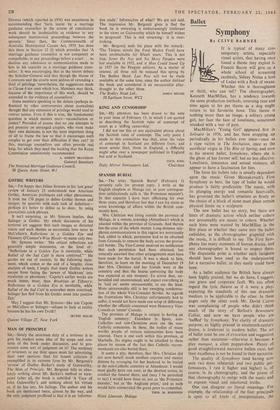GOTHIC WRITERS SIR,—I'm happy that Julian Symons in his 'just
great' review of January 25 understands new American Gothic, American professors and other phenomena. It took me 170 pages to define Gothic themes and images; he quarrels with such lack of definition— perhaps it's better to define as he does: by using journalistic catch-phrases.
It isn't surprising, as Mr. Symons implies, that Salinger is Gothic. My whole discussion of his tortured art suggests that such images as distorted vision and such themes as narcissistic love recur in McCullers's Reflections in a Golden Eye and Flannery O'Connor's Wise Blood—to name only two.
Mr. Symons writes: `His critical reflections are generally simple statements, on the level of : "Reflections in a Golden Eye is inevitable, while Ballad of the Sad Café is more contrived." ' He quotes me out of context. In the following state- ment, which comes at the end of a lengthy, close analysis of texts, I imply that many Gothic writers escape from facing the 'power of blackness' into mysticism or phoniness: 'Capote's earlier works are much better, truer, than Breakfast at Tiffany's; Reflections in a Golden Eye is inevitable, while Ballad of the Sad Café is somewhat more contrived; Salinger has fled from bis Gothic muse into positive Zen.'
May I suggest that Mr. Symons—like late Capote or McCullers or Salinger—refuses to look at reality because he has his own Truth?
IRVING MALIN


































 Previous page
Previous page